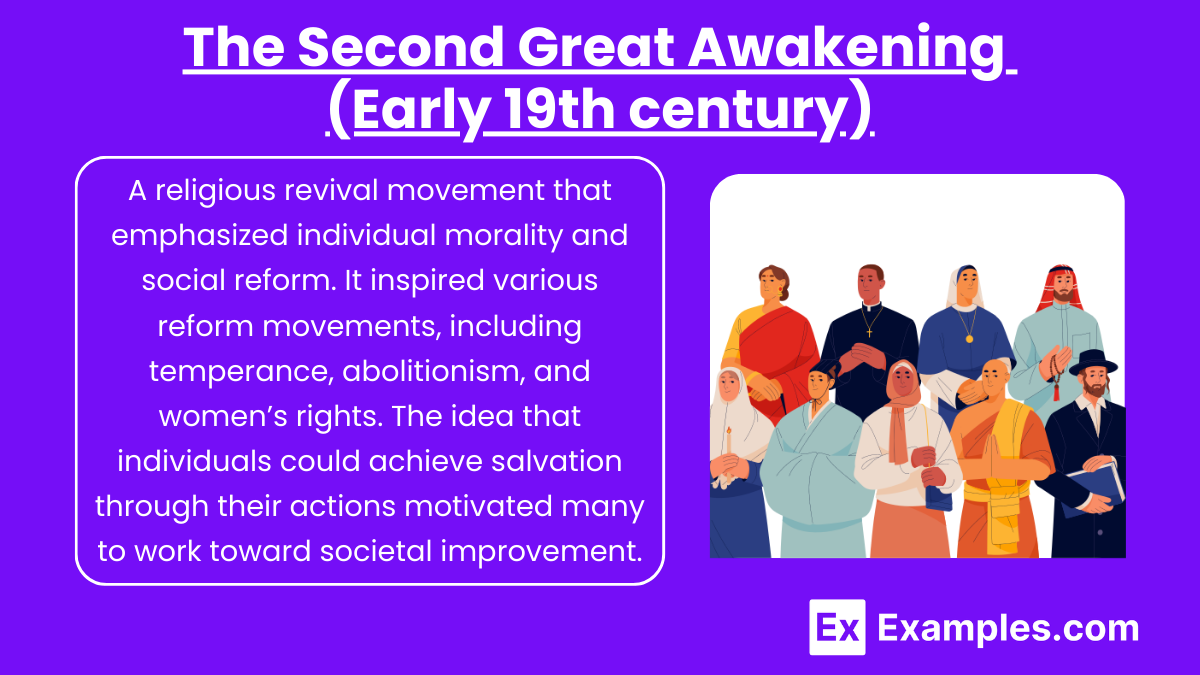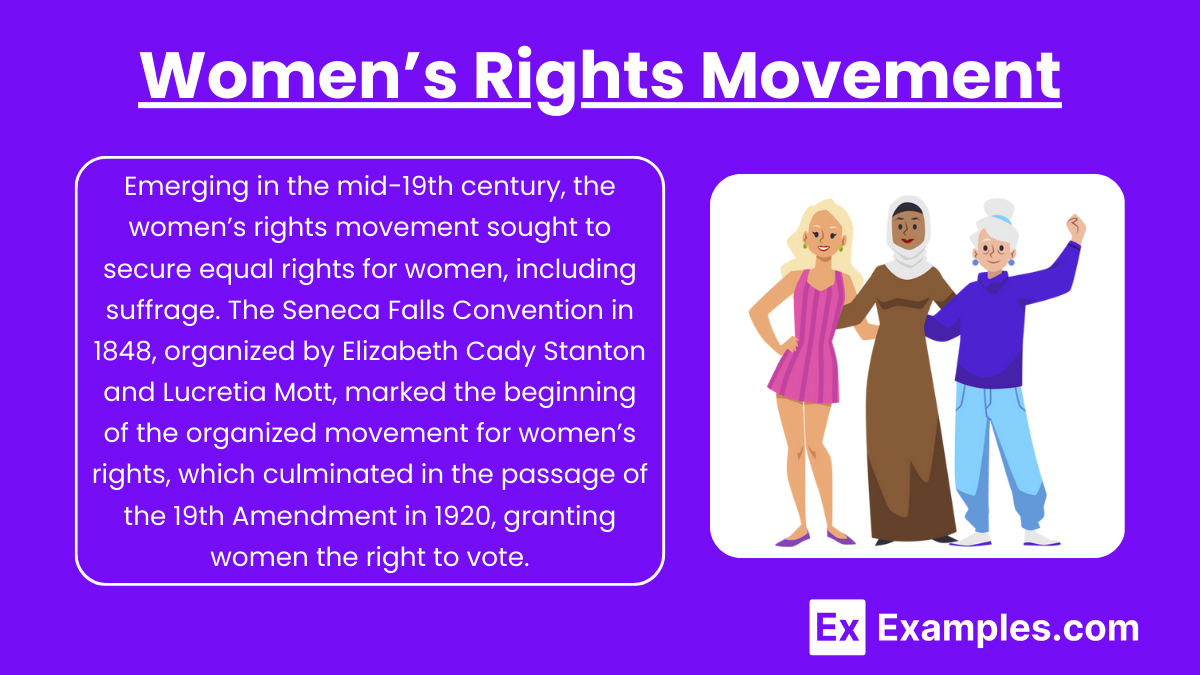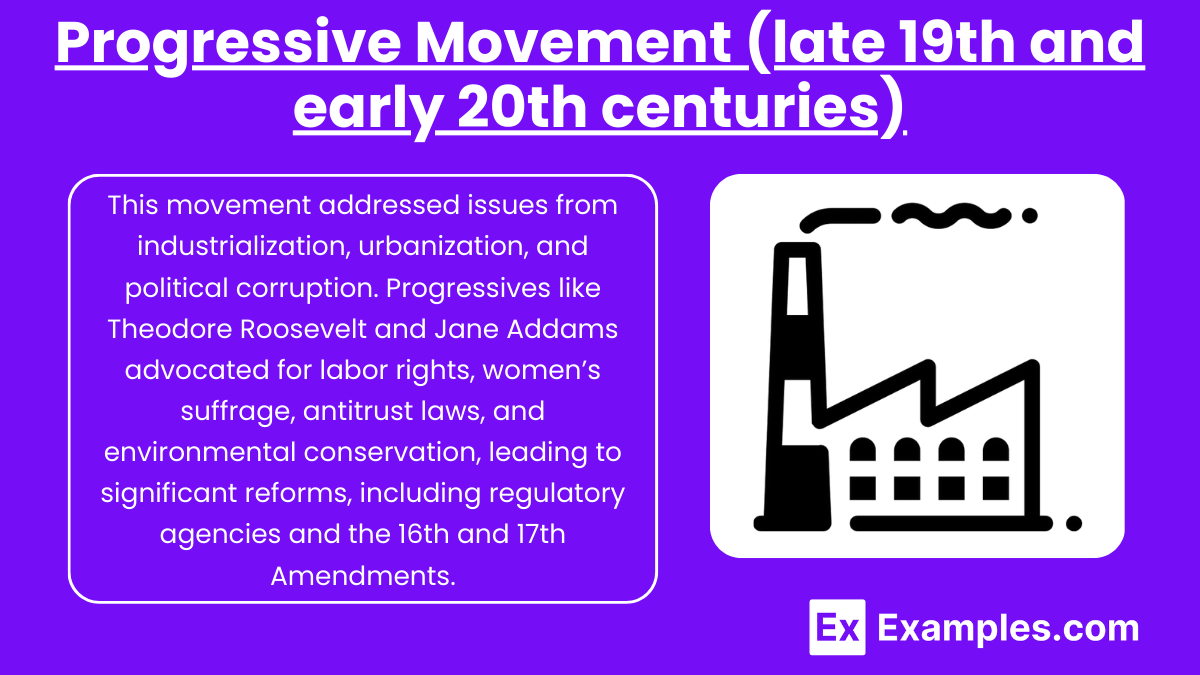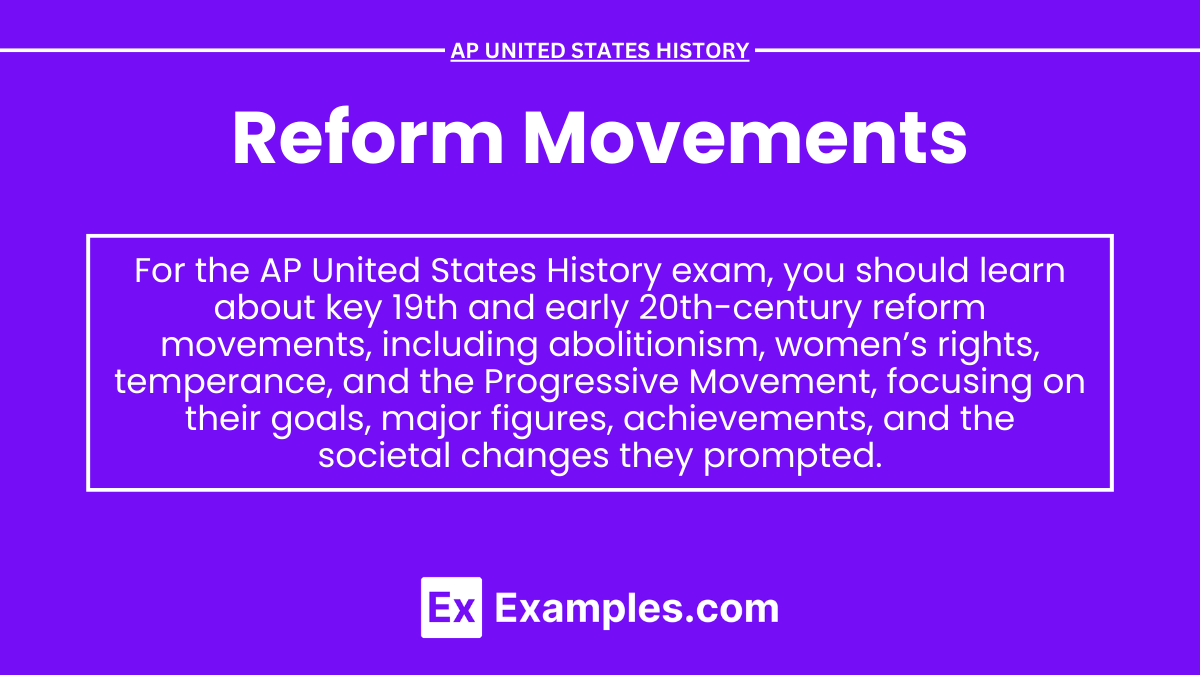In AP United States History, Reform Movements refer to the various social, political, and economic efforts throughout the 19th and early 20th centuries aimed at addressing injustices and improving American society. Driven by the Second Great Awakening, these movements sought to abolish slavery, secure women’s rights, reduce alcohol consumption, and reform labor and industry. The Progressive Movement later expanded these efforts, focusing on issues such as political corruption and economic inequality, leading to significant changes in American laws and societal norms.
Learning Objectives
The learning objectives for the topic “Reform Movements” will include the ability to analyze the causes and goals of various 19th and early 20th-century reform movements, such as abolitionism, women’s rights, and temperance. You will be expected to evaluate the impact of these movements on American society and politics, including key achievements like the 19th Amendment and the Progressive reforms. Additionally, you will be required to assess the role of religious and social influences in driving these reform efforts.
The Second Great Awakening (Early 19th century)

- A religious revival movement that emphasized individual morality and social reform. It inspired various reform movements, including temperance, abolitionism, and women’s rights. The idea that individuals could achieve salvation through their actions motivated many to work toward societal improvement.
Abolitionism

- The movement to end slavery gained momentum in the early 19th century, with leaders like Frederick Douglass, William Lloyd Garrison, and Harriet Tubman playing key roles. Abolitionists used newspapers, speeches, and the Underground Railroad to fight against the institution of slavery, leading to growing tensions between the North and South and contributing to the Civil War.
Women’s Rights Movement

- Emerging in the mid-19th century, the women’s rights movement sought to secure equal rights for women, including suffrage. The Seneca Falls Convention in 1848, organized by Elizabeth Cady Stanton and Lucretia Mott, marked the beginning of the organized movement for women’s rights, which culminated in the passage of the 19th Amendment in 1920, granting women the right to vote.
Temperance Movement

- Aimed at reducing alcohol consumption, the temperance movement gained strength in the early 19th century, with supporters arguing that alcohol was responsible for social problems like crime and poverty. The movement eventually led to Prohibition, enacted by the 18th Amendment in 1920, which banned the production, sale, and transportation of alcoholic beverages.
Progressive Movement (late 19th and early 20th centuries)

- This movement aimed to address the problems caused by industrialization, urbanization, and political corruption. Progressives, including figures like Theodore Roosevelt and Jane Addams, pushed for reforms such as labor rights, child labor laws, women’s suffrage, antitrust legislation, and environmental conservation. The movement led to significant changes in American politics and society, including the establishment of regulatory agencies and the passage of key amendments, such as the 16th (income tax) and 17th (direct election of senators) Amendments.
Examples
- Seneca Falls Convention (1848): The first women’s rights convention, which issued the Declaration of Sentiments calling for gender equality and women’s suffrage.
- The Underground Railroad: A network of safe houses and secret routes used by abolitionists to help enslaved people escape to free states and Canada.
- The 19th Amendment (1920): Granted women the right to vote, a major victory for the women’s suffrage movement.
- Prohibition (1920-1933): The 18th Amendment banned alcohol, reflecting the success of the temperance movement, though it was later repealed by the 21st Amendment.
- The Pure Food and Drug Act (1906): A Progressive-era law that regulated the labeling and safety of food and drugs, inspired by public outrage following Upton Sinclair’s The Jungle.
MCQs
- Which movement was directly influenced by the Second Great Awakening and sought to end slavery in the United States?
- A) Temperance Movement
- B) Abolitionist Movement
- C) Progressive Movement
- D) Women’s Rights Movement
- Answer: B) Abolitionist Movement
- Explanation: The Second Great Awakening inspired the abolitionist movement, which aimed to end slavery in the United States, leading to growing sectional tensions and the Civil War.
- What was the primary goal of the Seneca Falls Convention in 1848?
- A) To promote the temperance movement
- B) To advance women’s rights, including suffrage
- C) To support the abolition of slavery
- D) To address labor rights and child labor laws
- Answer: B) To advance women’s rights, including suffrage
- Explanation: The Seneca Falls Convention was the first organized meeting focused on women’s rights, issuing the Declaration of Sentiments, which called for gender equality and women’s suffrage.
- Which Progressive-era law was passed to regulate the labeling and safety of food and drugs?
- A) The Sherman Antitrust Act
- B) The Meat Inspection Act
- C) The Pure Food and Drug Act
- D) The Clayton Antitrust Act
- Answer: C) The Pure Food and Drug Act
- Explanation: The Pure Food and Drug Act of 1906 was a key piece of Progressive legislation that aimed to protect consumers by regulating the labeling and safety of food and drugs.


